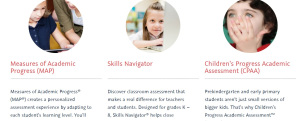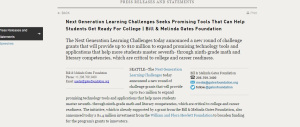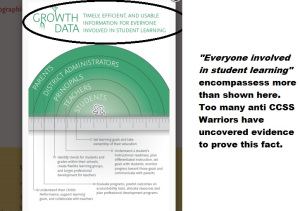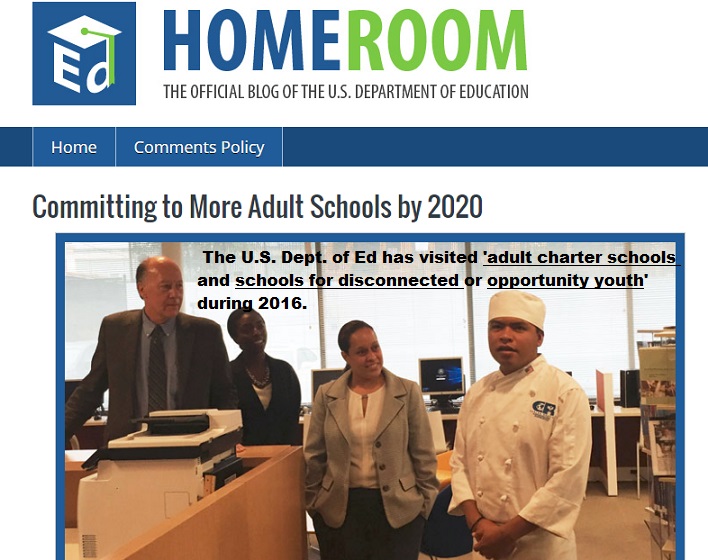
Yes, anti CCSS Warriors, we know how toxic the CCSS aligned assessments are. We also know how life altering those CTE/CCR assessments are when it comes to laying out a career track our students our students are locked into. We also know how much Pearson Publishing is making off these assessments, which by the way are all the way from PreK to graduate school!
BUT, did you know there’s a training facility, led by Pearson, to groom educational leaders in all the latest FORMATIVE assessment moves? That, my fellow warriors, is the focus of the news for this weekend. The previously published articles I’ve written about the formative and summative assessments will be included (for background or review) at the end of this article.
The Assessment Training Institute:
As I’ve shared with you before, I get all kinds of invitations for educational webinars, conferences, and other related events. So, finding out about this upcoming formative assessment on-line leadership meeting (is to happen 11/17/15), is an example. I don’t buy into the hype, but what I look for is the group or groups hosting such pro CCSS rhetoric. So, when I searched the internet for the Assessment Training Institute, I wasn’t surprised to see “Pearson”, but would there be any other surprises I’d find? Let’s see….
The website: http://ati.pearson.com/
The target audience: teachers and school districts
The products/systems ‘chatted up’? MAP and Skills Navigator
The host expert: Richard J. Stiggins
How long has the Assessment Training Institute been around? Since 1992, according to the website. It was founded by Stiggins. The goal? “to help classroom teachers develop skills needed to gather accurate information about student achievement and to use the assessment process and its results effectively to improve achievement.” They also spread their assessment knowledge… “ATI consultants are practitioners with extensive experience implementing the principles of high-quality classroom assessment at the classroom, school, district, and university levels.”
If you’d like to learn the whom the other experts are and the goals related to student assessments ATI has, visit: http://ati.pearson.com/about-ati/
Before we move on to the assessments themselves, you will definitely want the posters ATI offers teachers and others who are using assessments on our students. The first one contains the 7 reasons using assessments for students is a good thing: ATI_poster_7SAL The second one is all about the qualities of formative assessments: ATI_poster_KeysQCA
Be sure you look at the ATI’s professional papers, especially this one which ties the assessments to the CASL (Classroom Assessment for Student Learning) to the JCSEE (Joint Committee on Standards for Educational Evalutation). Why would I point you to this particular paper? I’ve shared with you previously just how toxically aligned JCSEE is to the CCSS Machine! (see: https://www.commoncorediva.com/2014/12/02/ftf-create-they-know-your-school-do-you-know-them/)
To access the CASL/JCSEE paper: JCSEE Student Eval Practices Symp Paper 2009
So, What’s a MAP? What’s the Skills Navigator?
MAP stands for ‘Measure of Academic Progress’. I found a great FAQ MAP pdf from a school district in Maryland which spells out what MAPs do, what students receive the assessment, and more. See: mapfaq
This school district didn’t create the MAP, nor did ATI, just what group did? The NWEA. The NWEA stands for “North West Evaluation Association”. What’s interesting is that the intended purpose of using MAP was to REDUCE the amount of assessments. I was able to track down a pdf from a Connecticut school district where they revealed MAPs have been used for a number of years. Here’s an excerpt from that pdf: “A main motivation in adopting MAP is actually to reduce the amount of testing. There is no reason to gather the same student performance information from multiple sources—we don’t need three or four reading comprehension measures if one provides enough actionable and reliable information.” You might be interested in what else this CT school district’s document shares. See: CTMAP
So, on to NWEA, we go! Their website: https://www.nwea.org/
Here’s a screen shot you need to see:

You should check out their business partners: https://www.nwea.org/business-alliances/
NWEA is a global, not for profit organization. From the NWEA’s “About Us” page, you can see USA school leaders extol the virtues of the MAP. Visit: https://www.nwea.org/about/, then scroll down until you see the embedded video (it is 2:50 minutes). To see the group’s history and learn who the founders are: https://www.nwea.org/about/history/
If you are like me, you may want to know who funds the NWEA. I was able to find the Gates Foundation’s recent grant to NWEA for the Next Generation System Initiative.
To see the grant: http://www.gatesfoundation.org/How-We-Work/Quick-Links/Grants-Database/Grants/2015/09/OPP1135897
To see what the Next Generation System Initiative is, first see the screen shot below, then access the entire press release by using the website address provided:

To see NWEA’s information on the Skills Navigator: https://www.nwea.org/assessments/skills-navigator/
To see NWEA’s alignment to the CCSS and other ‘state led’ standards: https://www.nwea.org/assessments/standards-alignment/
Did you know the NWEA has a Growth Research Database? Yes, according to a 2009 NWEA press release celebrating the state of South Carolina’s alignment of MAP to state standards, NWEA does indeed have one. Here is an excerpt: ‘NWEA delivers computerized assessment services to more than 3,400 education agencies and approximately 4 million students. Additionally, its Growth Research Database, the most extensive collection of student growth data in the country, provides a rich source for the study of academic achievement.’ Below is a Growth Data infograph chart. In my research, and from other’s against CCSS, we know this infograph is misleading, and on purpose!

While the NWEA has recently updated their website and the Growth Research Database isn’t as easy to find as it once was, I did find a 2006 NWEA report geared toward the use of the GRD to show the skills and achievement gaps in education. Here’s a quote you might find revealing, ‘Northwest Evaluation Association’s (NWEA) Growth Research Database (GRD) one of the most expansive repositories of longitudinal data on student growth in the country. The database comprises data of interest to education researchers, including assessment data gathered from NWEA member districts. These data provide a detailed look at academic growth, and aggregated proficiency levels. In addition, the tests from which the data are derived are more sensitive for low-and high-performing students, giving a more accurate picture of achievement.’ To see the entire report: https://www.nwea.org/content/uploads/2009/08/409_AchivGapStudyFinallowres_111006a.pdf
To see the other NWEA research (which details many subjects about CCSS) resources: https://www.nwea.org/resource/type/research-report/
(*Note: if you look all over the NWEA site, you can find the MAP ties to SBAC and PARCC!)
Now, knowing all this, combine it with the data mining Pearson has going on not only our students, but our teachers as well. It doesn’t take much to see how Pearson’s ATI and NWEA are working together. However, is there proof? Let’s see.
On page 10 of the NWEA’s 2015 publication, Assessment Integrity E-book, you can find Pearson’s ATI, not by name, but by the founder’s name (Stiggins) of ATI and other ATI associates! This E-book is slam full of all kinds of CCSS aligned programs, measurements, and ‘supportive research’. You will want to pour over this document with a fine tooth comb. Get it: NWEA-Assessment-Integrity-eBook
Another place you can find both Pearson and NWEA working together: The CCSSO (Council of Chief State School Officers).
Related articles:
https://www.commoncorediva.com/2015/02/03/ftf-tuesday-comprehending-assessments/
https://www.commoncorediva.com/2014/10/22/wybi-wednesday-assess-obsess-then-assess-again/

Thanks, Barbara, for sharing this!
So, if MAP and NWEA have a large database of student growth, and ‘growth’ is the changing of attitudes and values it is certainly not very academic at all is it? Such deceit. MAP is the new assessment at many privates schools where I live.
If you have any further evidence of private ed, SEL (social emotional learning) and assessments, please share. Many in private education are not aware of the dangers. Your story and evidence may help. Thanks.